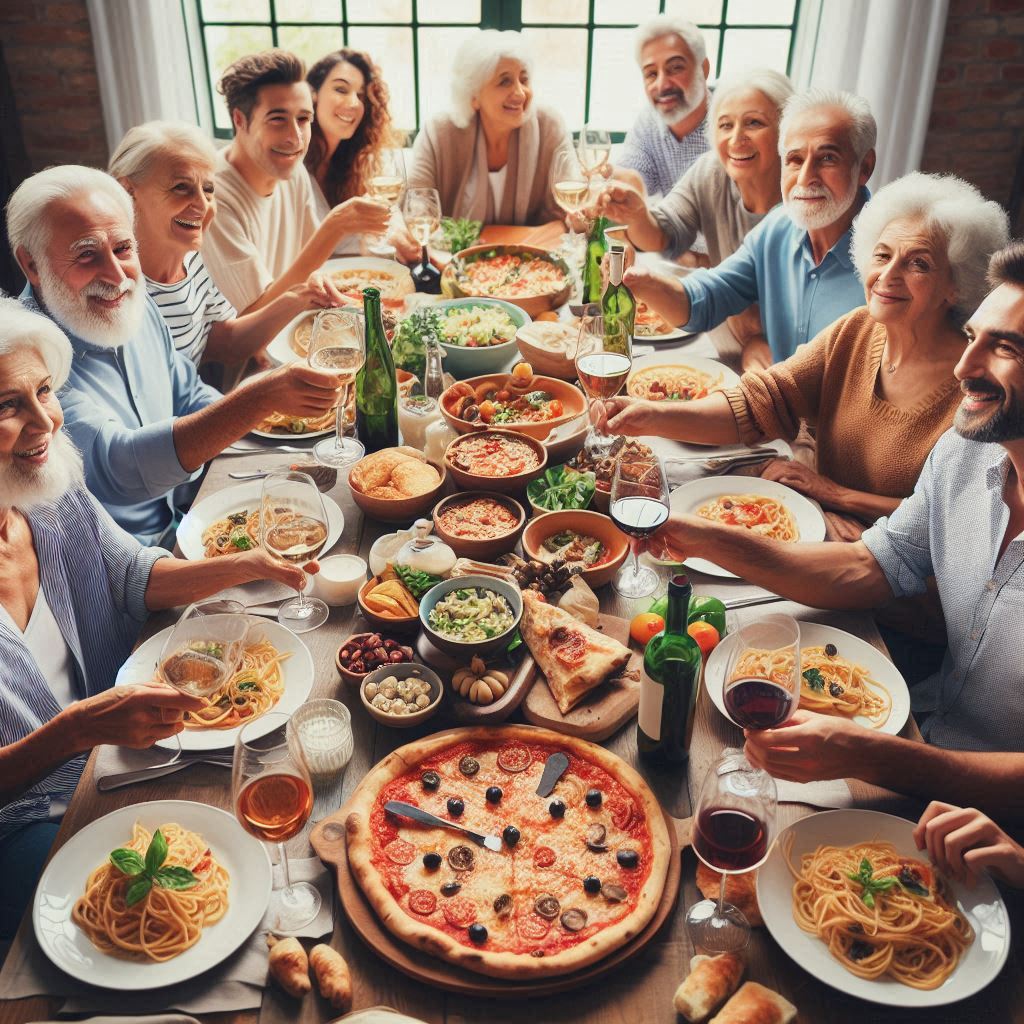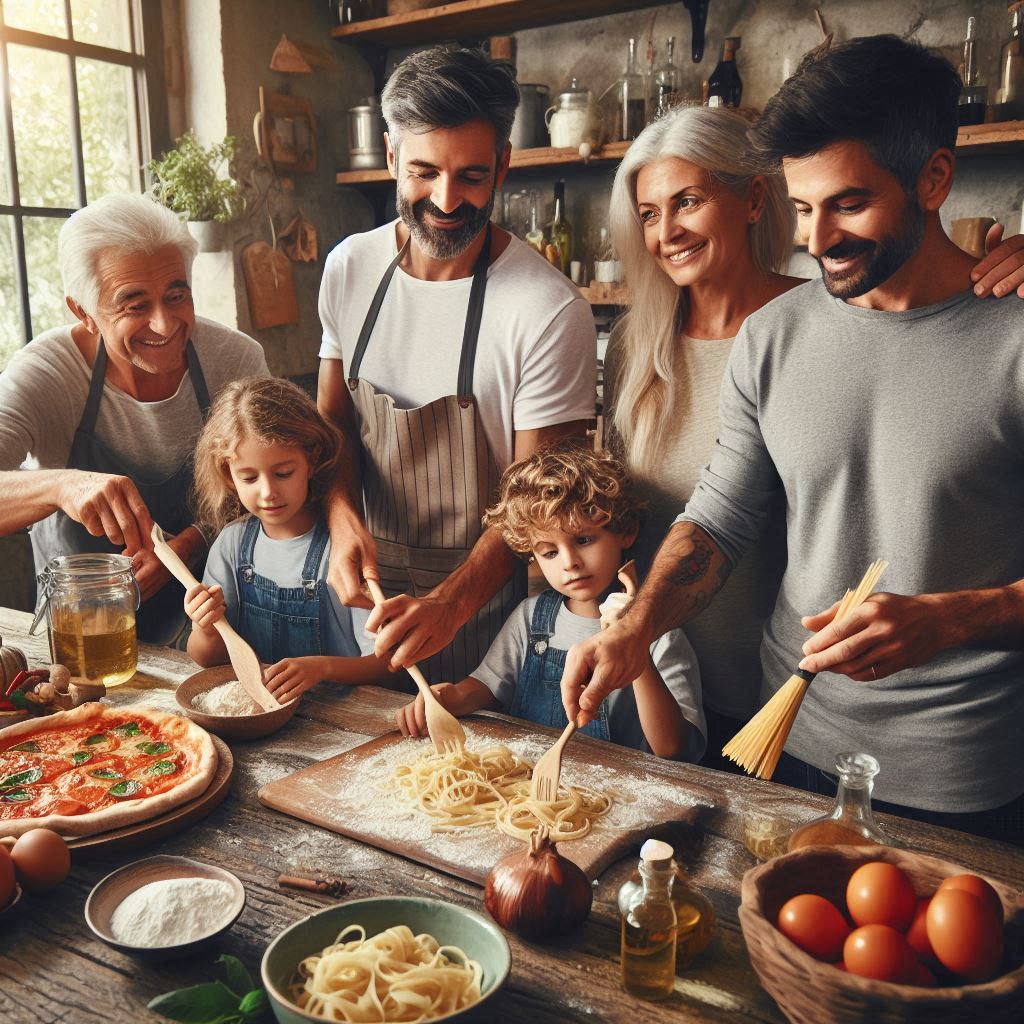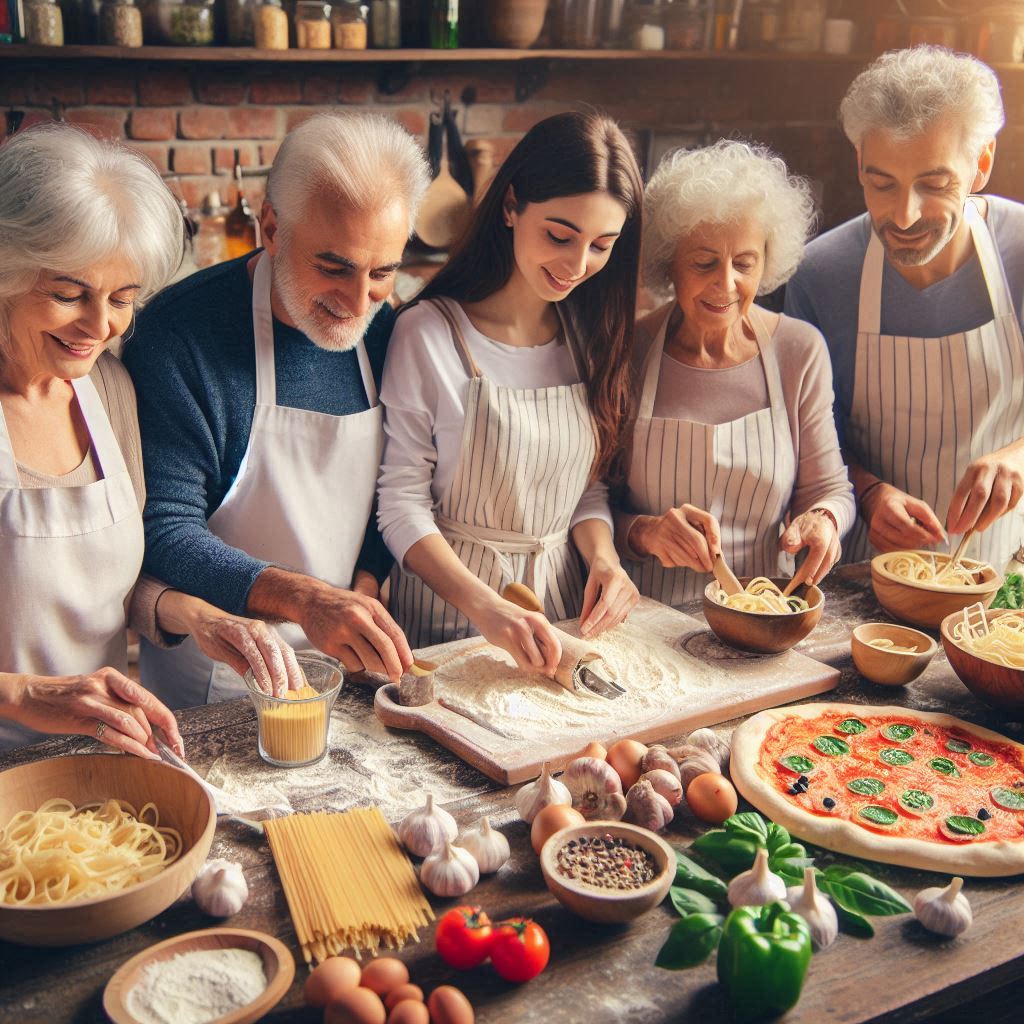In Italian culture, family is deeply revered and occupies a central role in society. Italians place great value on family ties, fostering strong connections and nurturing relationships. The Italian language reflects this significance with unique terms of endearment for different family members, extending beyond immediate relatives to include aunts, uncles, cousins, and close family friends.
The Italian language is rich with specific words that denote family roles, from “nonna” (grandmother) to “nipote” (grandchild), each term emphasizing the unique bond within the family. This linguistic richness underscores the pivotal role family plays in Italian culture.
Family gatherings are a cornerstone of Italian life, with meals serving as a vital means of strengthening bonds and celebrating togetherness. Traditional family recipes, passed down through generations, not only preserve flavors but also the cultural heritage and identity of Italian families.
Italy’s regional diversity adds depth to its cultural landscape. Vibrant local festivals and traditional dishes highlight the unique customs and flavors of different regions, showcasing the country’s rich and varied cultural heritage.
This article will explore the essence of family in Italian culture, delving into its significance, unique vocabulary, and traditions, and examining how family shapes broader societal values in Italy.
Key Takeaways:
- Family is deeply valued in Italian culture, with an emphasis on strong bonds and nurturing relationships.
- Italian has unique terms of endearment for various family members, reflecting deep connections within the family unit.
- Meals and family recipes play a crucial role in preserving heritage and reinforcing familial ties.
- Regional traditions and differences contribute to the rich and diverse cultural landscape of Italy.
- The essence of family extends beyond immediate relatives, fostering a sense of community and belonging.
The Role of Tradition in Italian Culture

Tradition is a fundamental aspect of Italian culture, connecting communities and generations through shared customs and practices. From religious celebrations to culinary practices, traditions play a crucial role in preserving Italy’s cultural heritage and identity.
Religious Celebrations and Festivals

Religion is integral to Italian culture, with significant celebrations marked by elaborate processions and feasts. Easter and Christmas, for example, are celebrated with great fervor, featuring processions like the Via Crucis (Way of the Cross) that bring communities together. Each region has its own festivals, such as the Palio di Siena and Carnevale di Venezia, reflecting local customs and traditions.
Italian Cuisine and Family Recipes
Italian cuisine is renowned for its rich flavors and regional specialties. Family recipes, cherished and passed down through generations, preserve cultural heritage and reflect regional differences. From Emilia-Romagna’s lasagna to Sicily’s caponata, each dish tells a story of tradition and identity.
Regional Differences and Cultural History

Italy’s regions each offer distinct culinary and cultural experiences. Northern regions like Lombardy and Emilia-Romagna feature hearty dishes, while central regions such as Tuscany emphasize rustic simplicity. Southern regions like Sicily and Campania offer vibrant, diverse flavors. These regional differences enrich Italy’s cultural tapestry and reflect the country’s rich history.
The Power of Passion in Italian Culture
Passion is a defining characteristic of Italian culture, evident in art, music, and romance. Italians are known for their intense emotions and expressive nature, which manifest in their artistic traditions and personal connections.
Italian Art
Italy’s artistic heritage, from Renaissance masterpieces to contemporary street art, reflects the passion and creativity of its artists. The vivid colors and intricate details of Italian art capture the essence of life and emotions.
Italian Music
Italian music, particularly opera, is celebrated for its dramatic and emotionally charged performances. The powerful vocals and orchestral arrangements create a moving experience that resonates with listeners.
Love and Romance
Love and romance are central to Italian culture, characterized by passionate gestures and poetic expressions. Italians excel in the art of romance, with tender serenades and heartfelt love letters being cherished elements of their relationships.
The Connection Between Family and Food in Italian Culture

Food is a vital element of Italian culture, symbolizing the connection between family, tradition, and regional diversity. Italian cuisine, known for its rich flavors and high-quality ingredients, is central to family gatherings and cultural celebrations.
Italian Cuisine
Italian cuisine spans a wide array of traditional dishes, each with its own regional character. Family recipes, often cherished heirlooms, connect generations and preserve cultural identity. The use of fresh, high-quality ingredients underscores the importance of authenticity and tradition in Italian cooking.
Family Meals
Meals are more than just a time for nourishment; they are social events that bring families together. The leisurely pace of Italian meals allows for meaningful connections and conversations, reinforcing familial bonds and creating lasting memories.
Regional Differences in Italian Cuisine

Italy’s culinary landscape is marked by regional diversity, with each area offering its own unique dishes and flavors. From the rich, hearty fare of the North to the light, seafood-based cuisine of the South, Italian regional cuisine provides a diverse and flavorful experience.
Northern Italy
Regions like Lombardy and Veneto are known for their hearty dishes, including risotto and polenta. Emilia-Romagna is famous for its Parmigiano-Reggiano cheese and cured meats.
Central Italy
Tuscan cuisine features rustic ingredients and handmade pasta, while Umbrian dishes include porchetta and truffles.
Southern Italy

Southern regions like Campania and Sicily offer vibrant dishes such as Neapolitan pizza and Sicilian caponata. Puglia is renowned for its durum wheat pasta and olive oil-based recipes.
The Italian American Immigrant Experience
The Italian American experience represents the blending of Italian and American cultures, resulting in a unique cultural identity. Italian immigrants, arriving in large numbers between the late 19th and early 20th centuries, adapted to a new land while preserving their heritage.
Italian American Population

Italian Americans are one of the largest ethnic groups in the U.S., with significant populations in states like New York, New Jersey, and California. Their contributions span various sectors, including politics and cuisine.
Italian American Cuisine
Italian American cuisine blends traditional Italian recipes with American influences, resulting in dishes that reflect both cultures. This fusion celebrates the adaptability and creativity of Italian immigrants while preserving their culinary heritage.
Conclusion
The essence of family in Italian culture is defined by strong bonds, rich traditions, and passionate expressions of love. Italians place great importance on family, extending their values and sense of community beyond immediate relatives. Through language, food, and tradition, family remains a cornerstone of Italian identity and culture.


